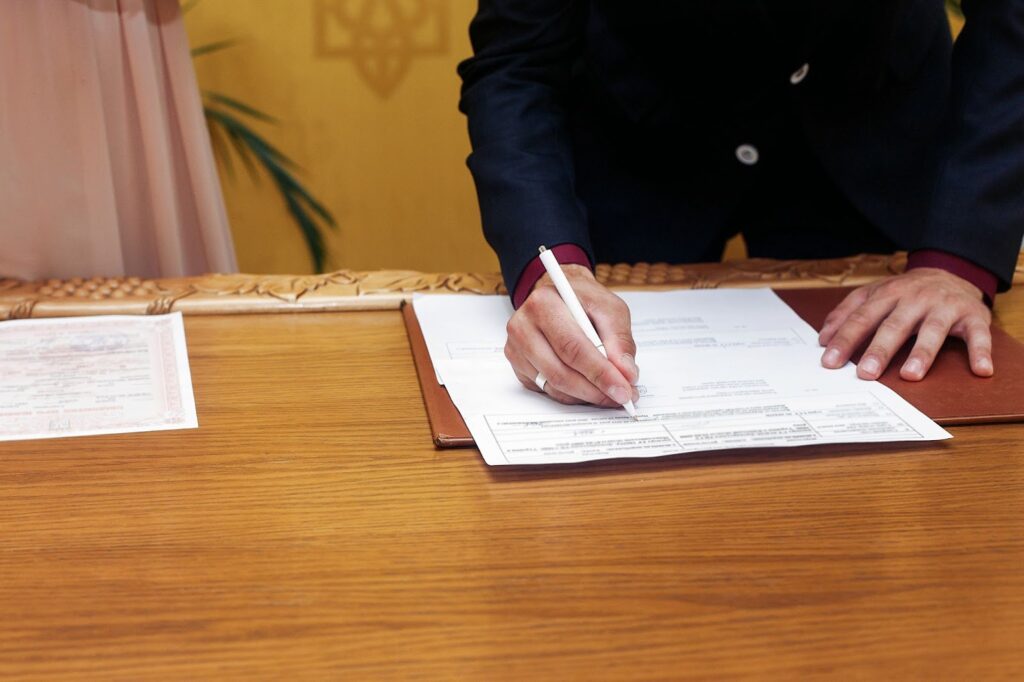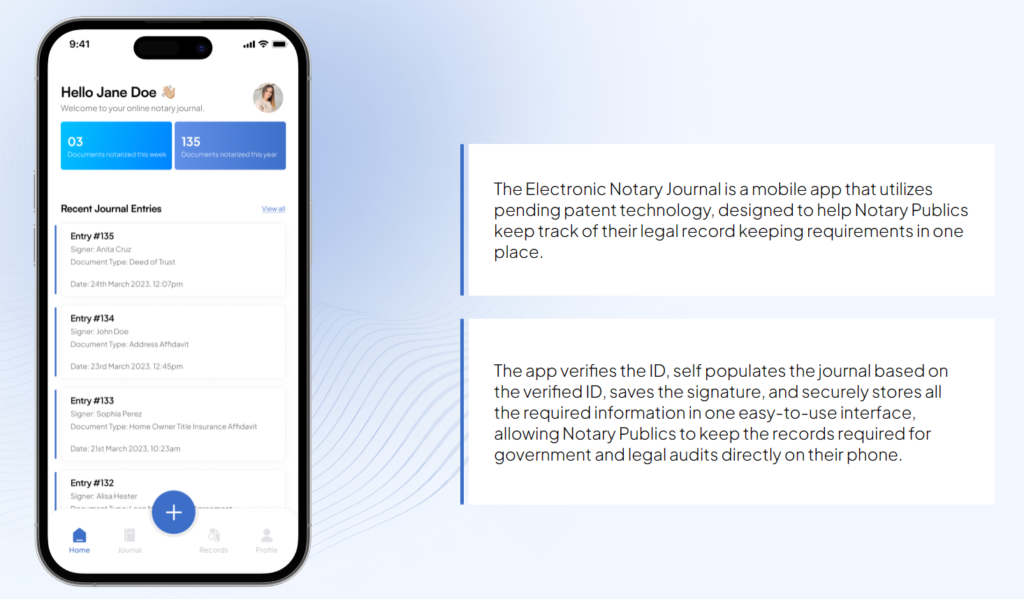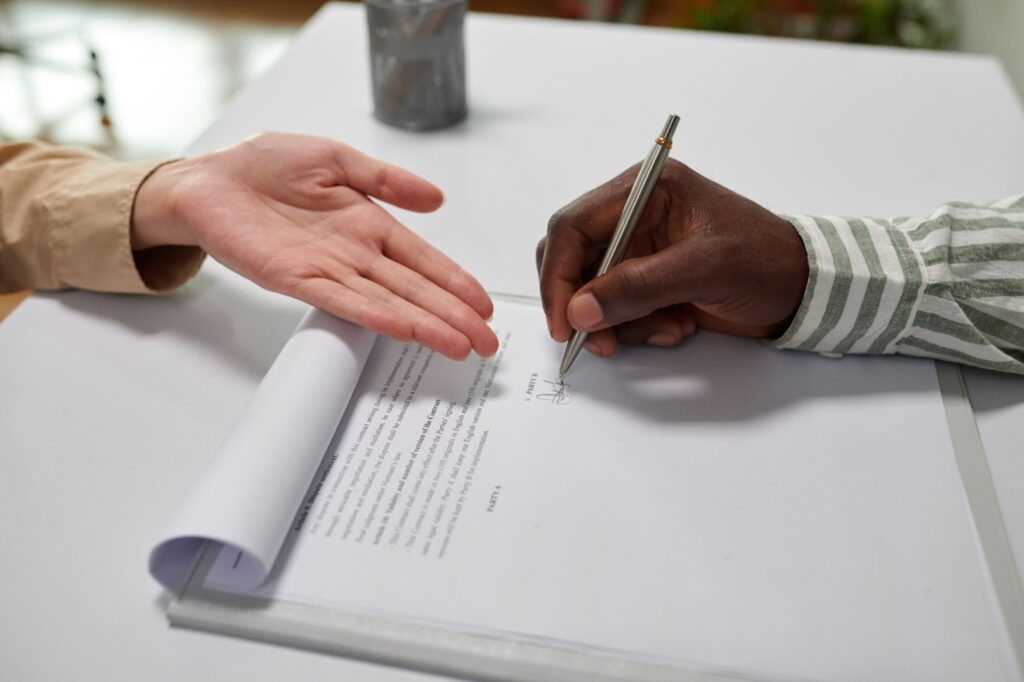oxygen domain was triggered too early. This is usually an indicator for some code in the plugin or theme running too early. Translations should be loaded at the init action or later. Please see Debugging in WordPress for more information. (This message was added in version 6.7.0.) in /var/www/wp-includes/functions.php on line 6121In the notarization process, the order in which signatures are collected—known as the "signing order"—is crucial for ensuring the validity and legal standing of a document. Whether you are dealing with contracts, affidavits, or real estate transactions, maintaining the correct signing order prevents potential legal issues and disputes. Improper signing order can lead to invalid documents, causing significant complications down the line.
For notaries and individuals alike, understanding and adhering to the correct signing order is essential. The Notary Journal App simplifies this process by guiding users through each step, ensuring that all signatures are collected in the proper sequence. This not only ensures compliance with legal standards but also enhances the security and integrity of your notarized documents.

A signing order refers to the specific sequence in which signatures must be collected on a legal document to ensure its validity. This sequence is essential in various types of legal documents, such as contracts, affidavits, and real estate transactions, where the order of signatures can impact the document's enforceability and legality.
The correct signing order ensures that all parties involved have acknowledged and agreed to the terms in the appropriate manner. For example:
Adhering to the correct signing order prevents potential legal challenges and disputes by confirming that all parties have duly participated in the signing process. The Notary Journal App aids in maintaining this sequence by guiding users through each step, ensuring that all signatures are collected in the correct order and recorded accurately. This helps notaries and clients ensure compliance with legal standards and enhances the security and integrity of their notarized documents.

The requirements for signing order can vary significantly from state to state, impacting how notarized documents are processed and validated. Each state has laws governing the notarization process, including specific signing orders for different documents. For instance:
Understanding and adhering to these state-specific regulations is crucial for ensuring the validity of notarized documents. Failure to follow the correct signing order can invalidate the document, leading to potential legal challenges.
Ensuring that all signatories are present during the signing process allows the notary to verify their identities and witness their signatures. This practice helps prevent fraud and ensures that each party willingly participates in the transaction.
In documents requiring witnesses, such as wills and affidavits, it is essential that witnesses sign in the correct order after the principal signatories. This order typically involves the principal signatory signing first, followed by the witnesses. The proper sequence is crucial for the document's legal standing.
The notary must witness the signing process and then acknowledge the signatures by affixing their seal or stamp. This step confirms that the document was signed voluntarily and in the notary's presence. Ensuring the notary correctly performs this acknowledgment is vital for the document's validity.
The Notary Journal App assists in managing these requirements by guiding users through each step of the signing process, ensuring compliance with state-specific laws. The app's features include secure ID verification, automatic record-keeping, and built-in compliance checks to help prevent errors that could invalidate documents.
By following these best practices and utilizing tools like the Notary Journal App, notaries and individuals can ensure that their documents are properly executed and legally sound, reducing the risk of disputes and enhancing the security of their transactions.
| Join as a notary and get a Free complimentary listing on our partner site: ww.notarypublicdirectory.com |
When handling signing important documents, our app can help you significantly in various areas:
The Notary Journal App guarantees all signatures are collected in the correct order by providing a structured, guided process. Its user-friendly interface leads signatories through each step, ensuring they sign in the appropriate sequence.
This feature is crucial for documents requiring multiple signatories, as it prevents out-of-order signing, which can invalidate the document. Moreover, the app's secure ID verification guarantees each signatory's identity is accurately confirmed before they sign, adding an extra layer of security to the notarization process.
The Notary Journal App has built-in compliance checks to confirm the signing order and notarization requirements are met.
These checks verify that all signatures are present and in the correct sequence. They also ensure the notary's acknowledgment is correctly applied, preventing errors that could invalidate the document.
By integrating these checks, the app helps you comply with state-specific laws and standards, reducing the risk of mistakes and ensuring the validity of notarized documents.
One of the standout features of the Notary Journal App is its ability to automatically record the sequence of signatures and provide a clear audit trail. Every action during the notarization process is logged, creating a detailed record that can be referenced later if needed.
This feature is invaluable for legal audits and disputes, as it provides indisputable evidence of the signing order and other key details. The app securely stores these records, ensuring they're easily accessible and protected from tampering or loss.

By using the Notary Journal App, you can manage the signing order more efficiently and accurately, ensuring all legal requirements are met and the notarized documents are valid. The app's advanced features, like secure ID verification, automatic compliance checks, and detailed record-keeping, streamline the notarization process and provide peace of mind for both notaries and their clients.
Although we’re all professionals, mistakes happen, and our job is always to be aware of them and prevent them from happening, or at least correct them as soon as possible when they happen.
Handling important documents and notarizing them, here are some of the most common mistakes:
A common mistake that can invalidate a notarized document is missing signatures. Each party's signature confirms their agreement to the document's terms. Missing even one signature can lead to disputes or the document being dismissed in legal settings.
The Notary Journal App helps prevent this by guiding you through the signing process, ensuring all necessary parties sign the document. The app prompts both the notary and signatories, ensuring no signatures are skipped, and the document is fully executed.
Collecting signatures out of order can invalidate a notarized document. The important signing sequence is vital, especially in legal documents where the order of signatures affects the document's validity and enforceability. Issues like improper acknowledgment of terms or miscommunication among parties can arise from out-of-order signing.
The Notary Journal App addresses this by structuring the signing process and guiding each party to sign in the correct order. This feature guarantees all signatures are obtained sequentially, maintaining the document's legal integrity.

Notaries can inadvertently make errors that impact the signing order, like failing to witness a signature correctly or not applying their seal in the proper sequence. These mistakes can invalidate the notarization and the document itself.
The Notary Journal App mitigates these risks by incorporating compliance checks and providing step-by-step guidance. The app guarantees all procedures are followed accurately, from verifying signatories' identities to applying the notary seal, thereby preventing common errors related to signing order.
If the signing order is incorrect, the document may be deemed invalid or unenforceable. This can lead to significant legal issues, such as disputes over the terms of the document or challenges to its authenticity. An incorrect signing order can result in the need for the document to be re-executed, causing delays and additional costs. Ensuring the correct signing order is a critical step in avoiding these potential complications and maintaining the document’s legal integrity.
If the signing order is incorrect, the document may be deemed invalid or unenforceable. This can lead to significant legal issues, such as disputes over the terms of the document or challenges to its authenticity. An incorrect signing order can result in the need for the document to be re-executed, causing delays and additional costs. Ensuring the correct signing order is a critical step in avoiding these potential complications and maintaining the document’s legal integrity.
To ensure the correct signing order, follow these practical tips:
Yes, many states now allow online notarization through Remote Online Notarization (RON) and Remote Ink-Signed Notarization (RIN). These processes use digital tools to verify identities, observe signatures, and apply notary seals remotely, providing a secure and efficient alternative to traditional notarization.
Maintaining the correct signing order in notarizations is vital for your documents' validity and legal standing. The proper sequence of signatures guarantees that each party has reviewed and agreed to the terms before finalization, preventing legal disputes and ensuring compliance with state regulations.
The Notary Journal App is invaluable for managing signing order effectively. It guides you through each step, ensuring all signatures are collected in the proper sequence and verifying compliance with legal standards through built-in checks. The app also provides secure ID verification, automatic record-keeping, and clear audit trails, making the notarization process seamless and reliable.
Take control of your notarization process today by downloading the Notary Journal App. Streamline your workflow, enhance security, and maintain the highest standards of validity for all your notarized documents. Ensure your documents are always legally sound and compliant with the Notary Journal App.